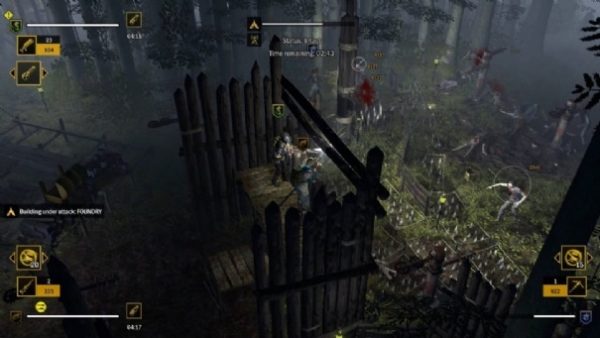This setting has given way to creating a rather different game from its predecessor, with a much stiffer structure based on grinding and strategy.
As in PC, in fact, even on PlayStation 4, the focus of the game is the construction of its own field. In this precious place, the player will have to build vital structures such as armory (good for making weapons and ammunition), kitchen (essential for preparing food and drinks), the knife and so on. The game allows you to give your base camp a more or less social dimension: in this sense,
Also consoles can handle missions and expeditions in groups of up to four users, and this is a good news, as the cooperative dimension is the one where How to Survive 2 is able to show off even more , although the game gives the ability to create an offline match to face completely alone. In this regard, we must say that the online infrastructure seems to hold well, despite the low number of public games: during our trials we were able to play in the company, although the primary goal of other online users was almost always to make us skin to fit our (though scarce) loot. The dear old Kovac
Keeping in mind the PC version one of the major curiosity factors related to the Playstation 4 counterpart of How to Survive 2 was the pad control system.
If, in fact, the keyboard offers all the freedom needed in terms of the amount of keys available, it is true that the mouse pointing system as well as that of movement has left us not so satisfied. We must say that the use of analog stickers helps move and often point out body-to-body weapons, while the quality of distance options, whose aim is delegated to the right stick, resembles the possible difficulties already encountered in our run with keyboard and m
ouse.The control system, in any case, goes to install itself on a gameplay that looks fairly fun if played in the company, but based heavily on a grinding which leaves a little ‘perplexed especially in the second part of the game, also considering the shortage of instructions and tutorials (as opposed to what happened in the first chapter). The first advice to give seems to be to install your base field not in the area initially reported by the game, but to push in the
northeast corner of the not so big game map in search of a more closed space. Given the importance of such dynamics within the title, it is worth repeating here some important points. In the course of the game, for example, you will have to carry out missions entrusted by Kovac and other secondary characters scattered around the environments. Each mission can be done as often as you want, at a higher or lower difficulty than our character’s level of experience. Each qu
est, then, it takes place in a special, circumscribed but not necessarily small area, separate from the freely explored map, and allows you to prey on precious loot. Once this is done, it will be possible to exploit how much it has been harvested to build an ever larger and richer field, but it will bend more and more zombies. In order to be able to “level” their own settlement, howe
ver, it will be necessary to overcome trials involving the arrival of massive hordes of monsters, always inclined to easily devastate structures constructed with the sweat of the forehead (and by systematically repeating two, three strategic quests). All this leads to a bottom line: Starting from the second half of the game, the title turns into an exercise of patience and perseveran
ce, in which grinding makes it master to the detriment of the greater organics and fluidity of the previous chapter, which is more exploration-driven and with a much slidable texture. There are other themes of interest, in any case, related to gameplay, including crafting weapons and resources, and managing hunger and thirst (but not sleep, disappeared in this iteration): for these and other details, let us refer to the aforementioned review PC. A zombie is always a zombie From technical point of view How to Survive 2 is not a game that can capture the attention so clearly: the speech was worth on the P
C, and is even more true of PlayStation 4, which is maintained isometric view that has the task of illustrating a sufficiently defined three-dimensional world. Also in this version appear the fearsome zombie animals, made in a discreet manner, as well as the atmospheric effects of some quests. Gaming in this area does not, therefore, offer particular points of analysis, an
d the same analysis can be referred to the sound field, which is pointed out for the inevitable (and characteristic) verses of the zombies, totally borrowed from the first chapter.

